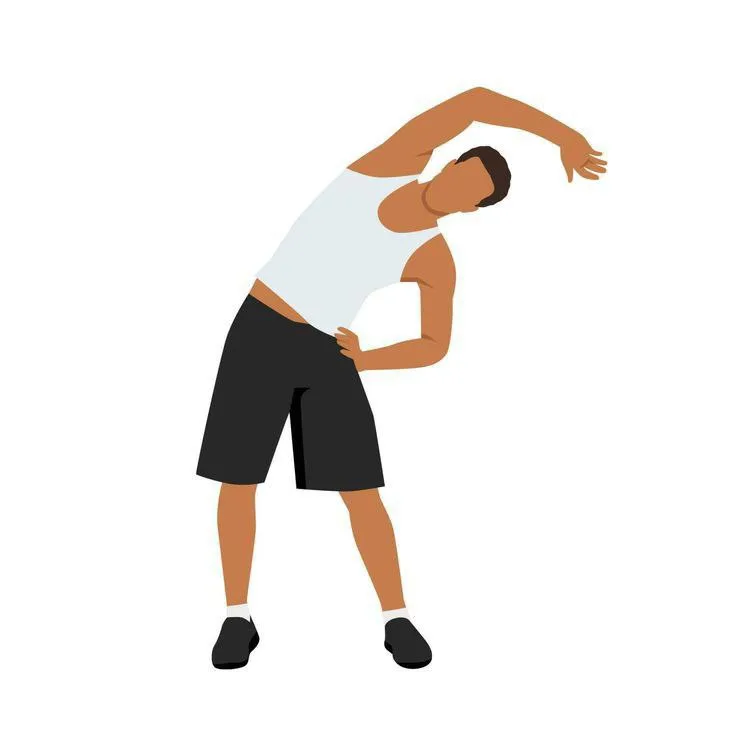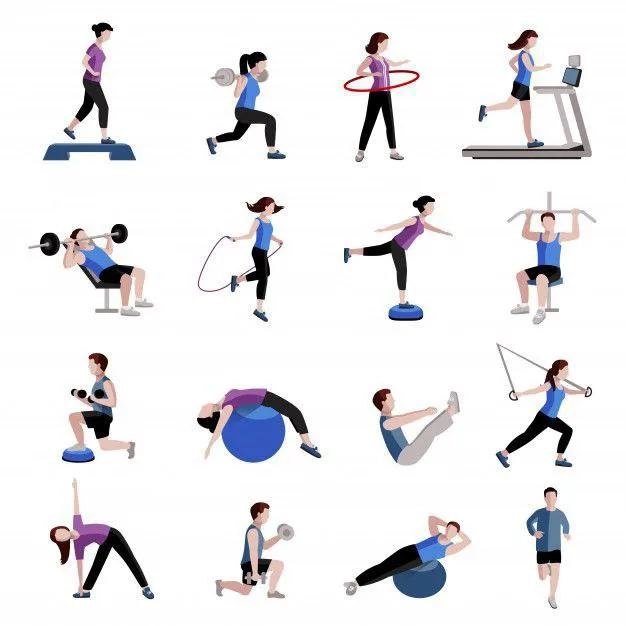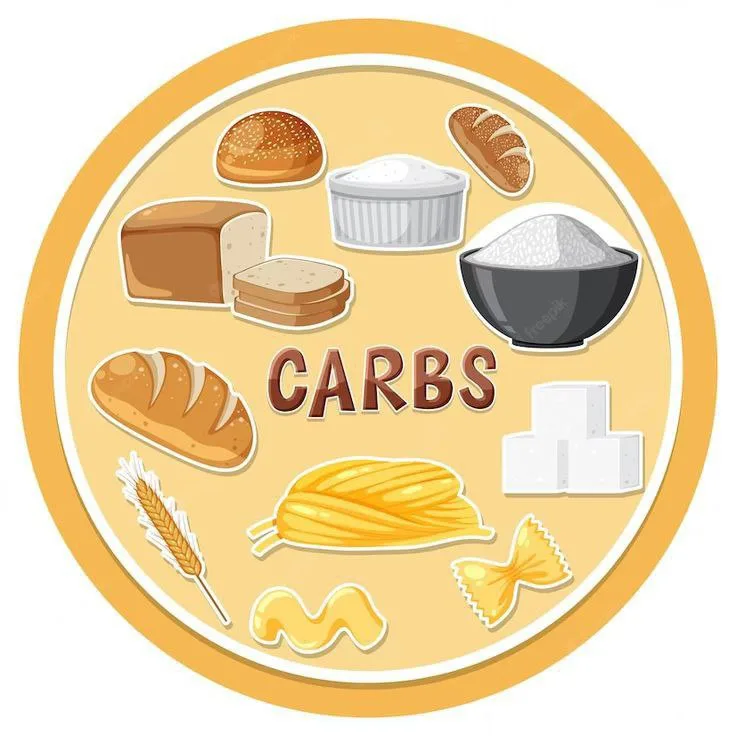The Truth Behind the Sweat: 10 Common Fitness Myths Debunked
Table of Contents
Don’t Get Fooled: Common Fitness Myths Debunked by Your Trainer
The fitness world is overflowing with information, advice, and yes, a hefty dose of myths. It’s easy for beginners (and even seasoned gym-goers!) to get overwhelmed and confused, wondering what actually works and what’s just a fad. But fret no more, fellow fitness enthusiasts! This guide, crafted by your friendly neighborhood trainer, tackles some of the most pervasive common fitness myths and sets the record straight.
We’ll debunk these myths and empower you to approach fitness with a clear mind. Let’s get started!
Myth 1: You Can Target Fat Loss in Specific Areas (Spot Reduction)

Myth: “I want to lose weight around my stomach, so I’ll do endless crunches!”
Debunked: Our bodies don’t lose fat in isolated areas. While crunches can strengthen your core, they won’t magically melt away belly fat. To lose fat overall, you need a combination of a healthy diet and full-body exercise that creates a calorie deficit.
Myth 2: Lifting Weights Makes Women Bulky

Myth: “Lifting weights makes women look manly!”
Debunked: Ladies, rejoice! Building significant muscle mass requires specific training protocols and a dedicated diet, which most women don’t naturally fall into. Lifting weights actually tones and sculpts your physique, leading to a strong and lean look.
Myth 3: Cardio is the Only Way to Lose Weight

Myth: “Running for hours is the only way to shed pounds!”
Debunked: While cardio is fantastic for burning calories, it’s not the only player in the weight loss game. Strength training builds muscle, which in turn, increases your metabolism and helps you burn more calories even at rest. Combining cardio with strength training is a winning strategy for lasting weight loss.
Myth 4: No Pain, No Gain (Embrace the Burn!)

Myth: “The more pain I feel, the better the workout!”
Debunked: While some muscle soreness is normal after a challenging workout, it shouldn’t be excruciating. Pushing yourself too hard can lead to injuries and hinder progress. Listen to your body, focus on proper form, and aim for a challenging but sustainable workout.
Myth 5: Stretching Before Exercise Prevents Injuries

Myth: “A long static stretch before every workout is crucial!”
Debunked: Recent research suggests static stretches before exercise might not be the best approach. Light dynamic stretches (think arm circles, leg swings) can improve mobility and prepare your body for movement. Save the deeper static stretches for after your workout when your muscles are warm and more receptive.
Myth 6: You Need Expensive Equipment or a Gym Membership to Get Fit

Myth: “I can’t afford a gym membership, so I can’t get in shape!”
Debunked: Absolutely not! Your bodyweight is a powerful tool. Utilize bodyweight exercises like squats, lunges, push-ups, and planks for a challenging workout. You can also get creative with household items like water bottles or cans as weights. Free workout videos online and outdoor activities like running or swimming offer fantastic exercise options without breaking the bank.
Myth 7: You Need to Work Out Every Day to See Results

Myth: “No rest days! I have to push myself every single day!”
Debunked: Rest and recovery are essential for muscle growth and overall fitness. Aim for 2-3 rest days a week to allow your body to repair and rebuild. During these rest days, focus on quality sleep and healthy eating to optimize your recovery.
Myth 8: Fasted Cardio Burns More Fat

Myth: “Working out on an empty stomach burns more fat!”
Debunked: While fasted cardio might have a slight edge in burning fat for fuel, the overall calorie burn difference is minimal. Working out fasted can also lead to dizziness and decreased performance. A healthy pre-workout snack can actually enhance your energy and workout intensity, potentially leading to a greater calorie burn overall.
Myth 9: Sweating More Means a Better Workout
Myth: “The more I sweat, the harder I’m working, and the better the results!”
Debunked: Sweating is a natural way for your body to regulate temperature. While sweating can be an indicator of exertion, it’s not a perfect measure of workout effectiveness. Focus on proper form, challenging yourself with progressive overload (gradually increasing weight or difficulty), and consistency to achieve optimal results.
Myth 10: Carbs Make You Fat

Myth: “Carbs are the enemy! I need to cut them out completely to lose weight!”
Debunked: Complex carbohydrates like whole grains, fruits, and vegetables are essential fuel for your body. They provide sustained energy for your workouts and daily activities. Restricting carbs can lead to fatigue, decreased performance, and muscle loss. Focus on choosing healthy complex carbs over refined carbs like white bread and sugary pastries.
Building a Sustainable Fitness Journey
Debunking these myths empowers you to approach fitness with a clear mind. Here are some key takeaways to build a sustainable and enjoyable fitness journey:
- Focus on Progress, Not Perfection: Fitness is a marathon, not a sprint. Celebrate small wins, track your progress, and don’t get discouraged by setbacks.
- Find Activities You Enjoy: Experiment with different workouts until you find activities you genuinely enjoy. This will make it easier to stay consistent in the long run.
- Listen to Your Body: Rest when you need it, prioritize proper form to avoid injuries, and fuel your body with nutritious foods.
- Make Fitness a Lifestyle: Don’t view exercise as punishment. Embrace it as a way to take care of yourself, feel energized, and live a healthy life.
Embrace the Journey, Not Just the Destination
Remember, fitness is a lifelong journey of self-discovery and improvement. Don’t get bogged down by myths or unrealistic expectations. Focus on building healthy habits, enjoying the process, and celebrating your progress. With consistent effort and the right information, you’ll achieve your fitness goals and unlock a healthier, happier you!
Bonus: Ask Your Trainer!
Have a lingering fitness question or myth you’d like debunked? Leave a comment below, and I’ll be happy to address it in a future post!
By following these tips and the information in this post, you’ve taken a significant step towards a fitter, healthier you! Now go forth and conquer your fitness goals!
I hope this comprehensive blog post empowers your readers to navigate the world of fitness with confidence!
Beyond the Myths: Building a Strong Fitness Foundation
While debunking myths is a great start, let’s delve deeper and build a solid fitness foundation. Here are some key aspects to consider:
1. Setting Realistic and SMART Goals:
SMART goals are Specific, Measurable, Achievable, Relevant, and Time-bound. Instead of a vague goal like “get in shape,” consider:
- “Lose 5 pounds in the next 3 months through a combination of healthy eating and strength training.” (Specific, Measurable, Achievable, Time-bound)
- “Increase my squat weight by 10% within the next 6 weeks.” (Specific, Measurable, Achievable, Relevant, Time-bound)
SMART goals keep you motivated, focused, and allow you to track your progress.
2. Building a Balanced Workout Routine:
A well-rounded routine incorporates different aspects of fitness:
- Strength Training: This builds muscle mass, which boosts metabolism and helps burn more calories at rest. Aim for 2-3 strength training sessions per week, targeting major muscle groups. Bodyweight exercises, free weights, or gym machines are all effective options.
- Cardio: This improves heart health, burns calories, and increases endurance. Aim for 150 minutes of moderate-intensity cardio or 75 minutes of vigorous-intensity cardio per week. You can incorporate activities like running, swimming, cycling, or brisk walking.
- Flexibility: Improves range of motion, reduces injury risk, and aids in recovery. Yoga, Pilates, or simple static stretches are excellent options. Aim for 2-3 sessions per week.
3. The Power of Nutrition:

Fuel your body with nutritious foods to support your fitness goals. Focus on:
- Complex Carbohydrates: Whole grains, fruits, and vegetables provide sustained energy.
- Lean Protein: Helps build and repair muscle tissue. Aim for protein sources like chicken, fish, beans, or lentils.
- Healthy Fats: Essential for hormone regulation and cell function. Include sources like avocados, nuts, and seeds.
- Hydration: Drink plenty of water throughout the day to stay hydrated and support overall health.
4. Prioritizing Sleep:

Sleep is crucial for muscle recovery, hormone balance, and overall well-being. Aim for 7-8 hours of quality sleep each night.
5. Finding Your Fitness Community:
Working out with a friend, joining a fitness class, or hiring a personal trainer can provide support, motivation, and accountability.
Remember, consistency is key! Focus on building healthy habits, celebrate your progress, and enjoy the journey towards a fitter and healthier you.
Final Note:
This blog post serves as a valuable resource for anyone looking to common fitness myths debunked and build a strong foundation for their fitness journey. By incorporating the strategies and resources provided, along with consulting your healthcare professional for personalized guidance, you can confidently navigate the world of fitness and achieve your health and wellness goals.
Share this content:




Post Comment